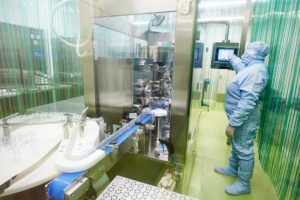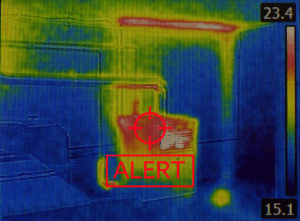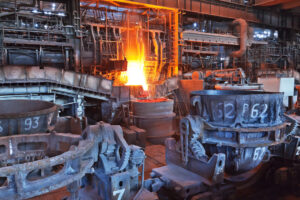We take water for granted, both the water we drink and the water we use in our homes and businesses. Across the US alone, hundreds of thousands of people work hard to make sure we get clean water and that our wastewater is properly treated so that it doesn’t pose a threat to our health.
There are more than 16,000 publicly owned wastewater treatment systems in the United States and they are all part of the country’s critical infrastructure. Without them, life as we know it would come to a halt.
These plants take care of our health—but who takes care of theirs? Despite their size, they’re almost invisible to us, unless something goes wrong. If their processes stop working like well-oiled machines, we all find out about it.
Enter video monitoring, the solution modern wastewater treatment plants use to ensure that they stay effective and, thus, invisible to “civilians.” Beyond actual security, video monitoring can ensure that the wastewater plant works around the clock to prevent a local catastrophe.
However, video monitoring for wastewater treatment plants is not as straightforward as you might think. We’ll get into that shortly but first, a quick primer about why you need video monitoring in these facilities.
Human Monitoring in Wastewater Treatment Plants Is Costly and Difficult
The sheer size of these facilities makes thorough human monitoring next to impossible. You would need hundreds of people just to check on every screw pump, every septage receiving system, and every ultrafiltration system.
This is untenable. Plus, it is very prone to error and, in this environment, every error is costly for both the plant and the community.
Enter video monitoring solutions for wastewater treatment plants.
Comprehensive Visibility
Contamination with deadly agents and expensive equipment malfunctioning are two of the most common problems on sewage treatment plants. Through video monitoring, you can spot them before they wreak havoc.
With cameras installed in all the right places, you don’t need hundreds of staff members to monitor everything. All you need is one human operator that can monitor everything via video feeds.
Here’s how video monitoring solutions for wastewater treatment plants can help you monitor your operations easier and with a much smaller budget:
On-Site Inspections Made Easy
Not all on-site inspections need to be done in person. Through dedicated video solutions, an inspector can cover multiple facilities in a single day without traveling at all.
The inspectors can watch the live feed from anywhere in the world and suggest improvements in real time or pinpoint issues before they become critical.
Off-Site Process Inspections Can Happen Asynchronously
Let’s say you already know that some of your processes can be improved upon but calling in an expert who can pinpoint the exact fixes takes time. Plus you need to work around their schedule.
With video monitoring, you can simply download the relevant footage and send it to them or invite them to watch the live feed (if possible) without having to travel to your facility.
Prevent Equipment Failures and Diagnose Issues Before They Bring Your Plant to a Grinding Halt
In wastewater treatment plants, downstream equipment failure due to an accumulation of solids (hairs, fibers, or large solids) is very common. With the right cameras in place, a remote operator can spot a blockage waiting to happen and communicate with the on-site personnel, who can remove the large solids and install screens.
Similarly, if a remote operator notices that the performance of some of the equipment is declining, they can simply alert the on-site workers, who can schedule preemptive maintenance for that equipment.
Improve Trainings and Worker Safety
Worker safety is a real issue in sewage treatment plants, just like the risk of contamination with deadly agents. Carefully placed cameras throughout your facility will help you spot inefficiencies in your procedures and prevent accidents and incidents from happening.
Plus, you can use the footage in new employee training to make sure every staff member knows the safety procedures that can save their lives.
How Can You Choose the Right Video Monitoring System for Your Wastewater Treatment Plant?
Just like in any other industrial application, off-the-shelf cameras aren’t up to the job for monitoring wastewater treatment plants. They may look like it, but they will only work for a short period of time and then you’ll have to replace them. Within a year, the cost of ownership of your video monitoring system could skyrocket.
Ruggedized cameras, on the other hand, are designed to work in harsh environments for years, not months. In a wastewater treatment plant, you need cameras that:
- Withstand high-humidity environments
- Work in high-vibration environments
- Are immune to debris
Of course, each of these categories is suitable for another area of your plant. This is why, at Opticom, we always advise our clients to speak to a video monitoring specialist before putting their system together.
This can save you a lot of money (you won’t spend on features you don’t need) and a lot of headaches (you’ll have the right cameras in the right places from the get-go).
Interested in a dedicated video monitoring system for your wastewater treatment plant? Reach out to one of our experts for a free phone or in-person consultation.







